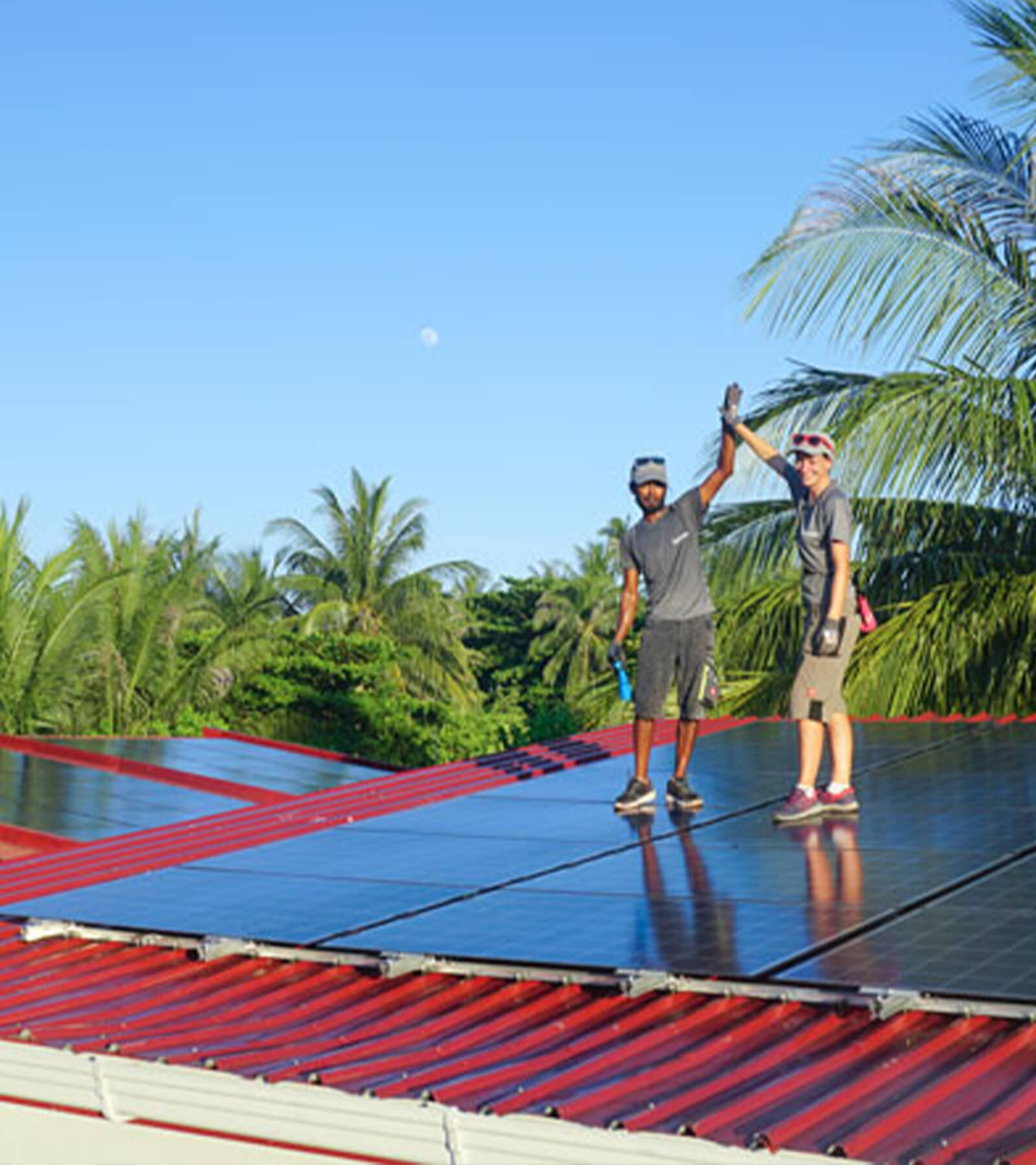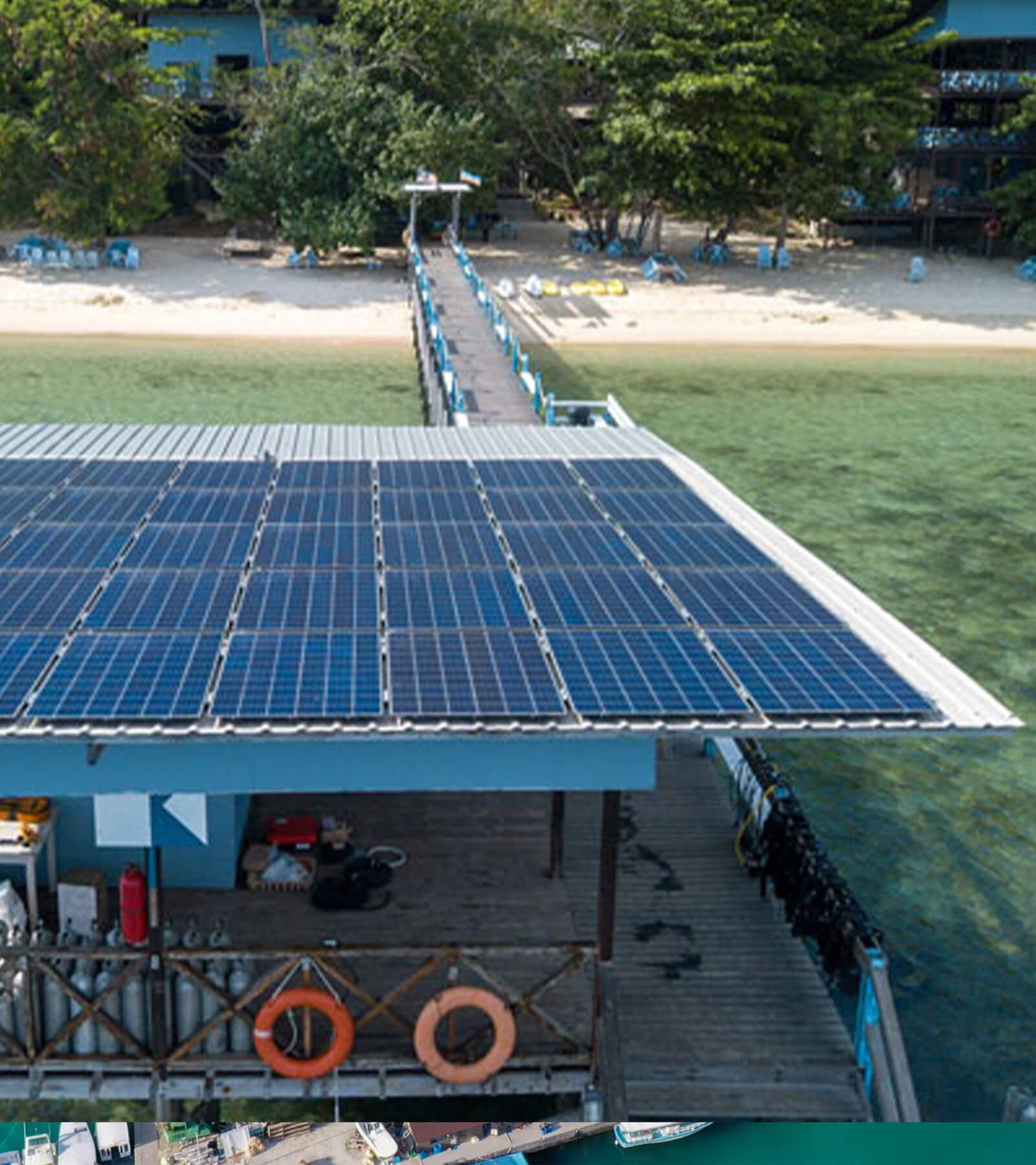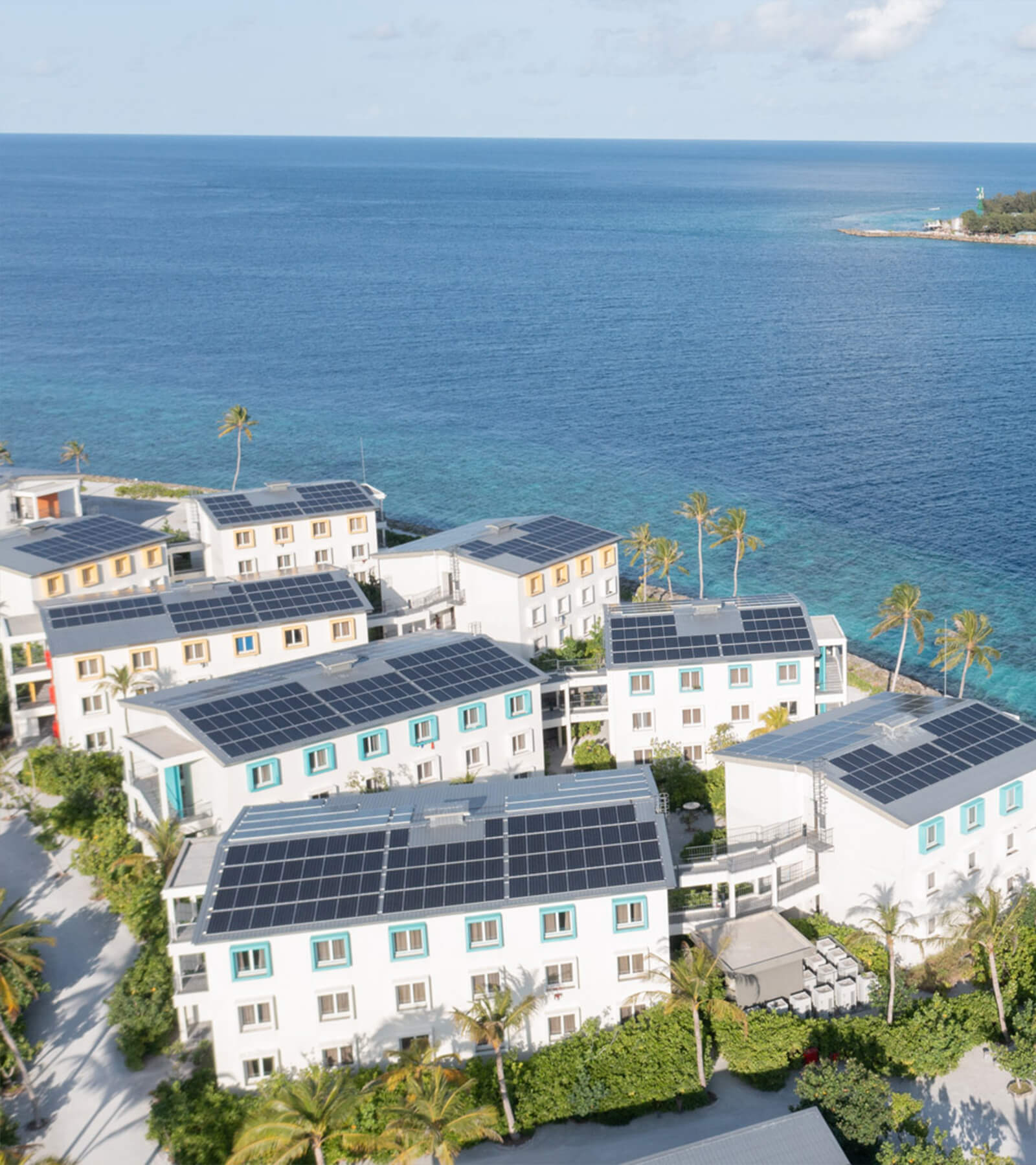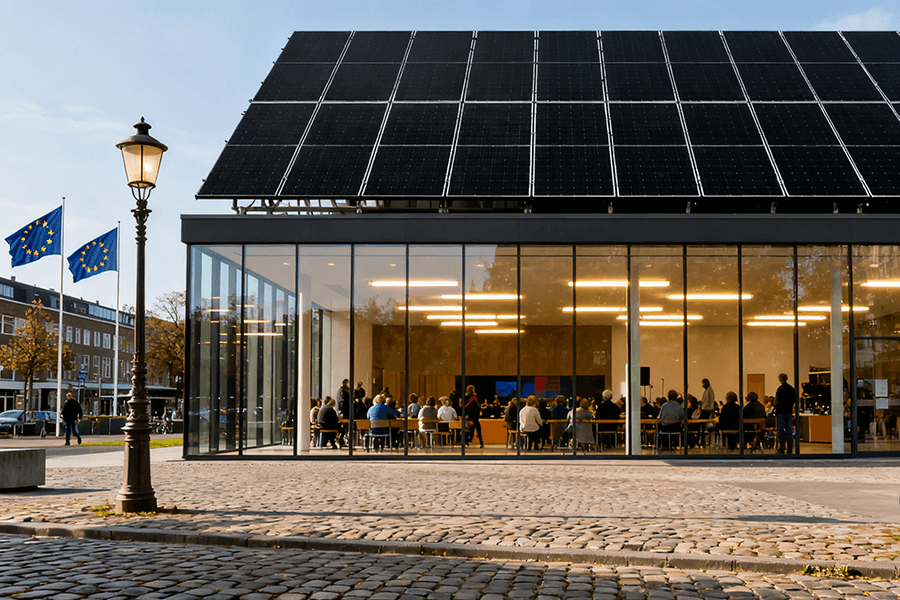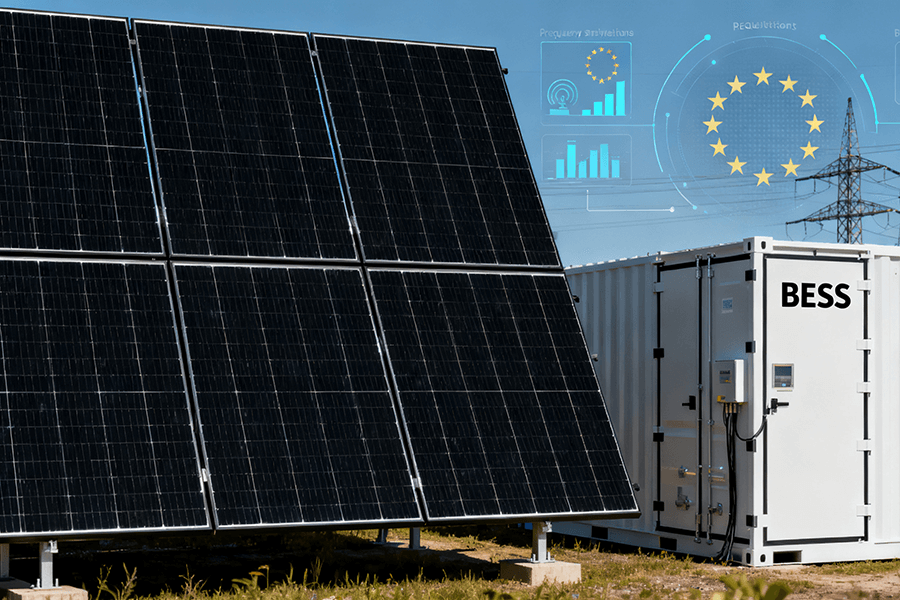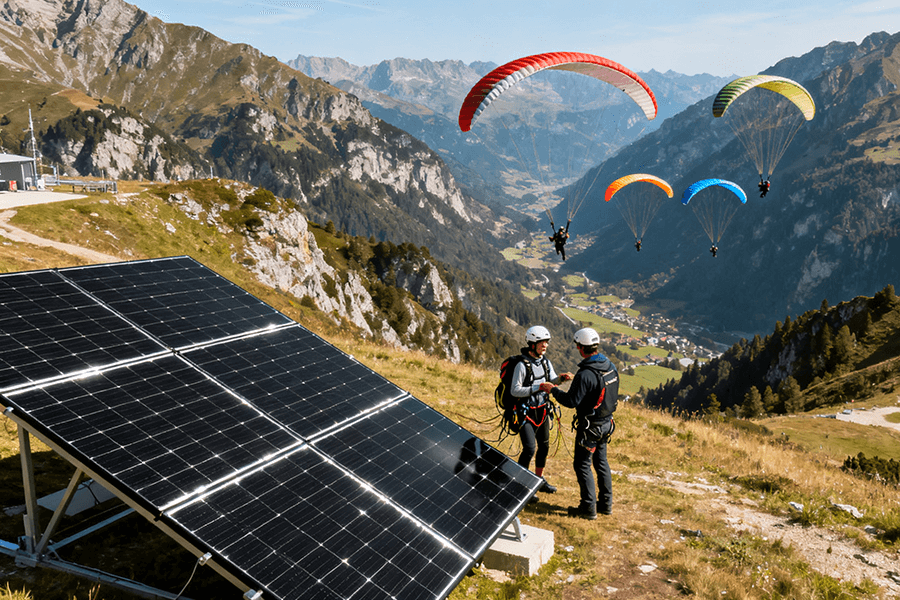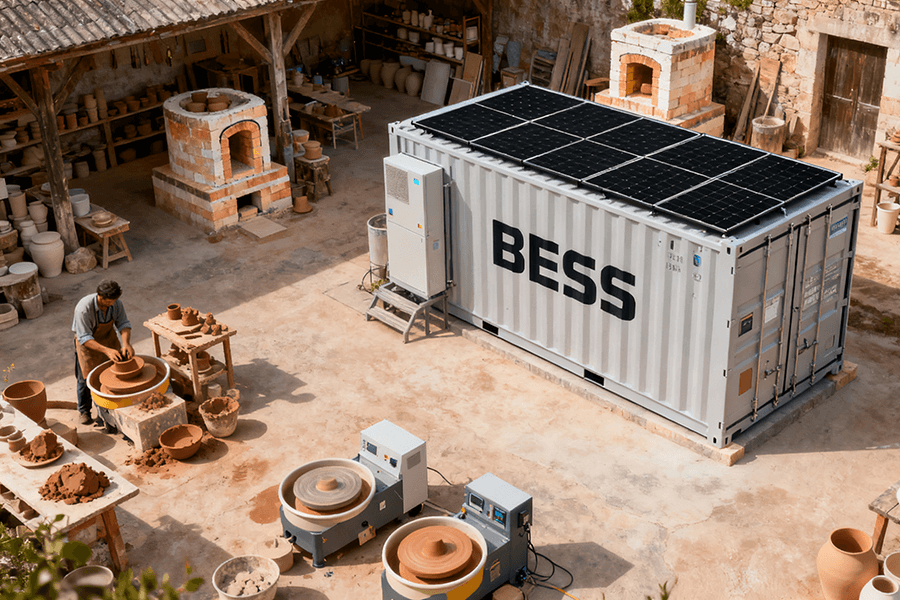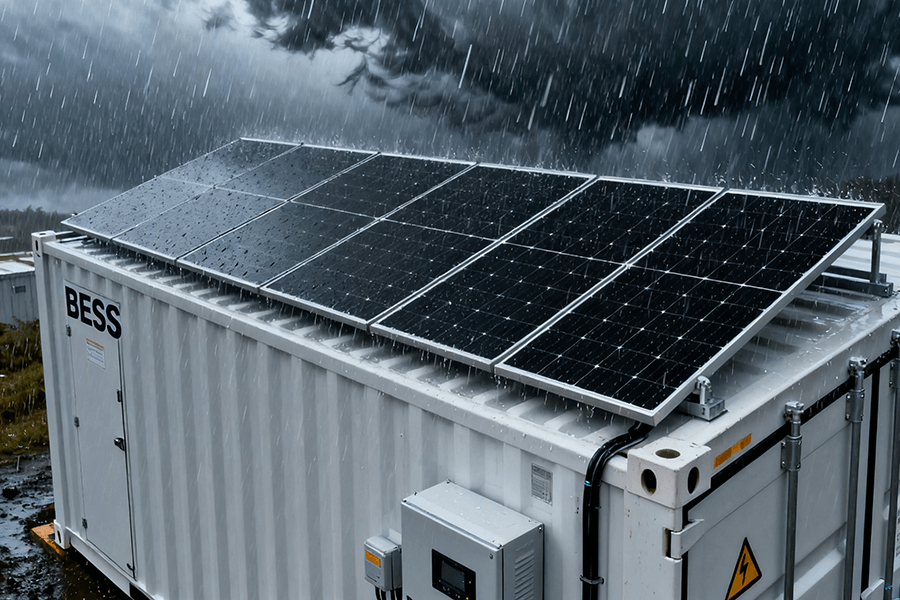
Europe’s Extreme Weather Energy Crisis—The Urgency for Solutions
Europe’s weather has transformed from “unpredictable” to “unforgiving” in recent years. Let’s set the scene with compelling hard data and in-depth analysis:
2023 Heatwave: A Scorching Crisis
Labeled the “most intense in 50 years” by the European Environment Agency (EEA), the 2023 heatwave was a record – shattering event. In parts of Spain and Italy, temperatures soared above 45°C (113°F), creating a hostile environment for energy production.
| Energy Facility Type | Impact |
|---|---|
| Coal Power Plants | Output dropped by 15 – 20% due to insufficient cooling water |
| Nuclear Power Plants | Faced similar cooling challenges, resulting in a 15 – 20% reduction in output |
As households and businesses cranked up their air conditioners to combat the sweltering heat, peak electricity demand spiked by a staggering 20% (EEA, 2023). This imbalance between supply and demand led to rolling blackouts in major European countries such as France, Germany, and Greece, disrupting daily life and economic activities.
2024 Blizzards: A Winter of Discontent
Winter storms “Eira” and “Freya” in 2024 brought a different kind of chaos to Northern Europe. Dumping 1 – 2 meters of snow across the region, these storms turned power lines into ice – covered hazards. The European Network of Transmission System Operators for Electricity (ENTSO – E) reported that over 500,000 customers, mostly in Sweden, Denmark, and Poland, were left without power for 3 – 7 days. In some rural areas, the wait for restoration stretched to a full 10 days.
| Country | Approximate Number of Affected Customers | Duration of Power Outage |
|---|---|---|
| Sweden | [X] | 3 – 7 days |
| Denmark | [X] | 3 – 7 days |
| Poland | [X] | 3 – 7 days (rural: 10 days) |
These extreme weather events laid bare a critical flaw in Europe’s energy infrastructure: the grid is designed for “normal” weather conditions, ill – equipped to handle the new climate reality. So, what is the solution? Enter BESS containers—imagine them as giant, mobile “emergency power banks” with long – lasting capabilities, far beyond the limitations of a typical power bank that loses its charge after just 10 uses. These containers are pre – assembled, highly transportable, and can be rapidly deployed when the grid fails, offering a much – needed buffer against future energy crises.
Emergency Power Supply Capabilities: BESS Containers as First Responders
When disaster strikes, ensuring the continuity of critical services becomes an immediate and life-saving imperative. Battery Energy Storage System (BESS) containers shine in these high-stakes scenarios, leveraging their remarkable portability and rapid activation capabilities.
Rapid Deployment for Critical Facilities (24-48 Hour Turnaround)
The efficiency of BESS containers stands in stark contrast to traditional backup generators, which demand time-consuming on-site assembly and rely on timely fuel delivery. In contrast, BESS containers come as fully integrated power units, housing state-of-the-art batteries, advanced inverters, and sophisticated cooling systems. This plug-and-play design enables seamless transportation via trucks, facilitating swift deployment to hospitals, emergency command centers, and refugee camps. Once on-site, these systems can be up and running within mere hours, providing an immediate power lifeline.
Case Example: 2023 German Hospital Rescue
During the searing heatwave of 2023, a major hospital in Munich faced a dire situation. Its backup diesel generators, overwhelmed by the extreme temperatures, failed to function, and the regional power grid teetered on the brink of a complete blackout. Recognizing the urgency, a local energy provider swiftly mobilized a 5MW/10MWh BESS container. In an impressive display of efficiency, the container arrived at the hospital within 36 hours. The technical team then completed the integration with the hospital’s power grid in just 2 hours. For the next 12 days, this BESS container provided uninterrupted power, ensuring the continuous operation of essential services:
- Operating Rooms: Maintained life-saving surgical procedures
- ICU Ventilators: Sustained vital respiratory support for critically ill patients
- Refrigerated Medicine Storage: Preserved temperature-sensitive medications and vaccines
Without the BESS container, the hospital would have been forced to evacuate over 200 patients, potentially endangering countless lives.
Key Stat: According to a 2024 study by the Fraunhofer Institute for Solar Energy Systems, BESS containers reduce critical power deployment time by 70% compared to traditional generators, highlighting their game-changing efficiency in emergency situations.
Off-Grid Operation: Power When the Grid Disappears
Natural disasters such as floods, landslides, and blizzards often wreak havoc on power transmission infrastructure, isolating entire regions from the main power grid. In these challenging circumstances, BESS containers serve as autonomous power sources, functioning as “microgrids” to restore electricity in disaster-stricken areas.
Case Example: 2024 Dutch Floods
In the Zeeland province of the Netherlands, heavy rainfall triggered a major flood event as the Scheldt River overflowed its banks, damaging 12 kilometers of power lines and leaving communities without electricity. To address this crisis, emergency services deployed six BESS containers, each with varying capacities ranging from 1MW/2MWh to 3MW/6MWh. These containers powered 12 emergency shelters housing 1,500 displaced residents, providing essential services that were crucial for survival and recovery:
| Service Provided | Significance |
|---|---|
| Lighting and Heating | Essential for comfort and safety in the 5°C March weather |
| Phone and Radio Charging | Enabled communication and access to emergency updates |
| Power for Portable Medical Clinics | Supported the treatment of hypothermia and waterborne illnesses |
For nine days, these BESS containers operated independently, serving as a vital lifeline for communities cut off from external help until the main power grid was fully repaired.
Grid Restoration & Stability: BESS Containers as Grid “Fixers”
Once lives are safe, the next step is getting the grid back online. BESS containers don’t just supply power—they help rebuild the grid itself, playing a dual – role that is crucial for post – disaster recovery.
Black Start Assistance: Jump – Starting Power Plants
After a full grid blackout, power plants face a significant challenge in restarting, as they lack the initial power needed to kickstart their operations. Even gas – fired power plants, which might seem self – sufficient, require a small, stable power source to initiate the restart process. This critical initial power – up procedure is known as a “black start,” and BESS containers have emerged as an ideal solution for this task.
Case Example: 2024 French Storm Blackout
In 2024, Storm “Freya” unleashed its fury on Brittany, France, causing widespread destruction. Among the most severe impacts was the shutdown of a 200MW gas – fired power plant, leaving 300,000 homes in the dark. Enter the 10MW/20MWh BESS container, which was swiftly deployed to perform the “jump start” operation.
This BESS container provided stable power to the plant’s intricate control systems and turbines, which are essential for the power generation process. By supplying a consistent and reliable power source, it enabled the plant to restart in an astonishingly short time of just 3 hours. In contrast, when relying on traditional diesel generators for black start operations, this process typically takes 12 – 15 hours.
| Metric | With BESS Container | With Diesel Generators |
|---|---|---|
| Restart Time | 3 hours | 12 – 15 hours |
Impact: The use of the BESS container had a profound impact on grid restoration in the region. It cut the grid restoration time by a remarkable 80%. According to RTE, France’s transmission system operator, this rapid restoration saved an estimated €2.3 million in economic losses. These savings were the result of reduced downtime for businesses, minimized disruption to essential services, and avoided costs associated with emergency response and recovery efforts.
Post – Disaster Load Balancing: Preventing Secondary Outages
When the grid begins its recovery process, it is in a highly vulnerable state. The sudden resumption of power generation and consumption can create significant imbalances. For instance, a surge in demand, such as when everyone turns on their heaters simultaneously after a power outage, or an unexpected spike in supply, like when a wind farm suddenly generates a large amount of power due to changing weather conditions, can easily trigger a second blackout. This is where BESS containers shine, acting as “shock absorbers” for the grid. They are capable of absorbing excess power during periods of oversupply and releasing stored power when demand surges, thus maintaining the grid’s stability.
Case Example: 2023 Italian Earthquake Recovery
A 5.8 – magnitude earthquake struck central Italy in 2023, causing extensive damage to the region’s grid, with 30% of its infrastructure affected. As power plants gradually came back online, operators deployed a 50MW/100MWh BESS fleet to manage the complex task of load balancing.
- Power Absorption: When a nearby wind farm experienced a sudden increase in power generation due to strong post – quake winds, the BESS containers quickly absorbed the excess energy. This prevented the grid from being overwhelmed by the sudden influx of power, which could have led to system failures.
- Power Release: As evening approached and demand spiked, with residents cooking meals and heating their homes, the BESS containers released the stored power back into the grid. This ensured that there was enough electricity to meet the increased demand without putting excessive strain on the recovering grid.
The results were remarkable. In comparison to the 2016 Italian earthquake, where no BESS was used and 3 secondary blackouts occurred during the recovery phase, the 2023 recovery effort achieved zero secondary outages. This success story highlights the critical role that BESS containers play in ensuring grid resilience during and after disasters.
Long-Term Resilience: Building Europe’s “Weather-Proof” Energy System
BESS containers aren’t just for emergencies—they’re a long-term investment in making Europe’s energy grid climate-resilient. Below are two actionable strategies, backed by data.
Pre-Disaster Reserve Layout: “Energy Arsenals” for Every Region
The faster BESS containers arrive, the less damage a disaster causes. To speed up response, European countries should establish regional BESS reserve bases—one per 500,000 residents, based on EEA recommendations.
Example: Rhine-Ruhr Region, Germany
With a population of 10 million, the Rhine-Ruhr (Europe’s most industrialized region) would need 20 reserve bases. Each base could store 3-5 BESS containers (2MW/4MWh to 5MW/10MWh), located near highways and ports for quick transport.
Cost-Benefit: A 2024 study by the European Commission found that pre-positioned BESS reserves reduce disaster-related energy losses by 40% and save €1.2 billion annually across Europe.
Integration with Weather Forecasting: “Pre-Charging” for Disasters
Why wait for a blackout to charge BESS containers? By linking them to Europe’s weather forecasting systems, operators can pre-charge containers when extreme weather is predicted—ensuring they’re fully ready to deploy.
How It Works:
- The European Centre for Medium-Range Weather Forecasts (ECMWF) issues a warning (e.g., “heatwave arriving in 5 days”).
- Energy operators use surplus grid power (e.g., from solar/wind farms) to charge BESS containers to 100% capacity.
- When the disaster hits, containers are already fully charged—no time wasted on charging.
Case: 2024 UK Heatwave Preparation
In July 2024, ECMWF predicted a 40°C heatwave for the UK. National Grid pre-charged 25 BESS containers (total 75MW/150MWh) across England. When the grid dipped in London and Birmingham, the containers were deployed in 18 hours—preventing blackouts that had occurred during the 2022 UK heatwave.
Critical BESS Case Summary (2023-2024)
To underscore the pivotal role of Battery Energy Storage Systems (BESS) in fortifying Europe’s energy resilience, the following real-world applications across diverse extreme weather and emergency scenarios illustrate their critical importance. Each case study exemplifies how BESS containers function as mobile energy lifelines, ensuring grid stability and safeguarding essential services.
2023 Heatwave in Munich, Germany:
During record-breaking temperatures, a 5MW/10MWh BESS system powered Munich’s largest hospital. This was crucial in maintaining critical care operations and preventing the evacuation of over 200 patients. The system’s rapid response capabilities effectively stabilized local grids under thermal stress (Fraunhofer ISE, 2024).
2024 Blizzards in Brittany, France:
After severe winter storms, a 10MW/20MWh BESS unit restarted a 200MW gas power plant within three hours. This enabled the faster reconnection of 300,000 households, minimizing disruption to residential and commercial energy supply (RTE, 2024).
2024 Floods in Zeeland, Netherlands:
Multiple BESS units with a combined capacity of 1-3MW/2-6MWh sustained power to 12 emergency shelters for nine consecutive days during unprecedented flooding. The stored energy supported critical services like heating, lighting, and medical equipment for 1,500 displaced residents (Dutch Ministry of Climate, 2024).
2023 Earthquake Recovery in Central Italy:
Following a major seismic event, a large-scale 50MW/100MWh BESS deployment prevented secondary power outages and accelerated grid restoration by 50% compared to the 2016 earthquake response. It provided immediate backup power, facilitating emergency relief efforts and infrastructure repairs (Terna (Italian Grid), 2024).
These instances collectively showcase BESS as a versatile solution for crisis management, offering adaptable energy storage that can be rapidly deployed to meet the dynamic demands of emergency response. Whether countering the impacts of climate change-induced heatwaves, winter storms, floods, or natural disasters, BESS containers are emerging as indispensable assets in Europe’s strategic energy security toolkit.
Conclusion: BESS Containers—Non-Negotiable for European Energy Security
Extreme weather isn’t a “once-in-a-century” event anymore—it’s the new normal. BESS containers have proven they’re not just “nice to have”—they’re essential. They deliver emergency power to hospitals, jump-start dead grids, and build long-term resilience. But to maximize their impact, Europe needs:
- Policy Support: Tax incentives for BESS deployment (e.g., Germany’s 2024 BESS Grant Scheme, which covers 30% of container costs).
- Market Investment: More funding for regional reserve bases (the EU’s 2025 Green Deal allocates €500 million for BESS infrastructure—but this needs to double).
About Maxbo Solar: Your Partner in BESS Resilience
At Maxbo Solar (www.maxbo-solar.com), we’re not just selling BESS containers—we’re building Europe’s energy safety net. As a leading provider of utility-scale BESS solutions, we offer:
- Customized Containers: Ranging from 1MW/2MWh (for small shelters) to 10MW/20MWh (for grid restoration), designed to withstand Europe’s harshest weather (from -25°C blizzards to 45°C heatwaves).
- Proven Reliability: Our BESS containers have been deployed in 8 European countries, including the 2024 Dutch floods and 2023 German heatwave cases mentioned above.
- End-to-End Support: We handle everything from site assessment and container design to installation and 24/7 maintenance—so you never have to worry about power when you need it most.
For Europe’s energy security, the time to act is now. With Maxbo Solar’s BESS containers, you’re not just preparing for the next storm—you’re winning against it.

